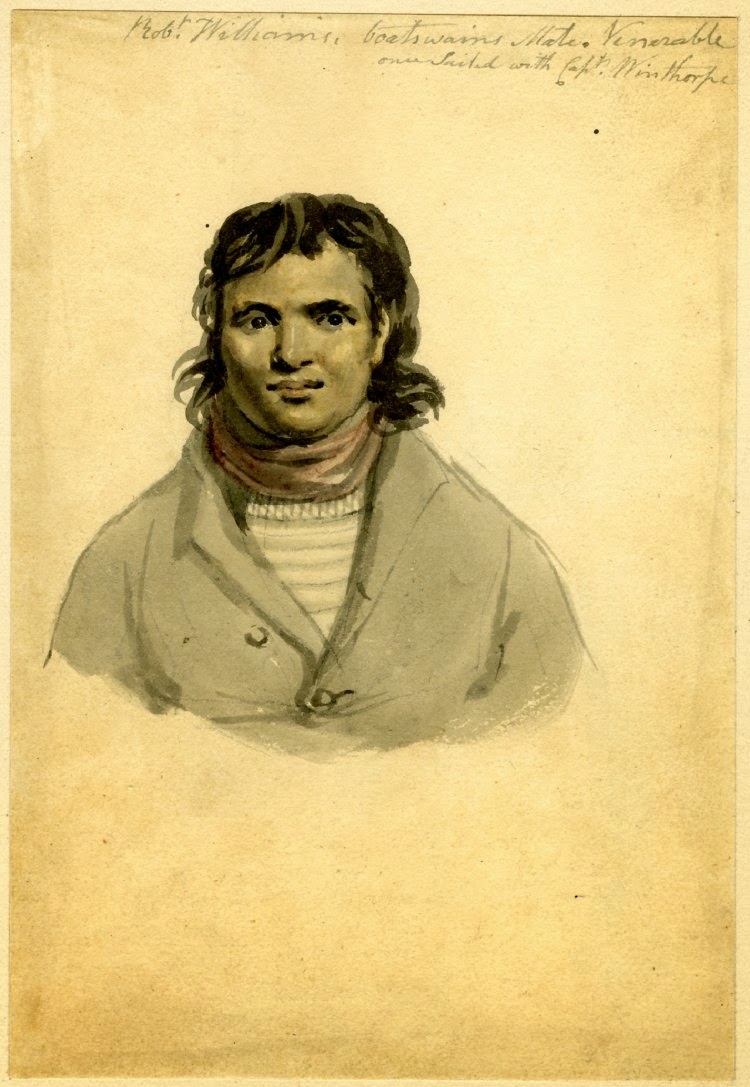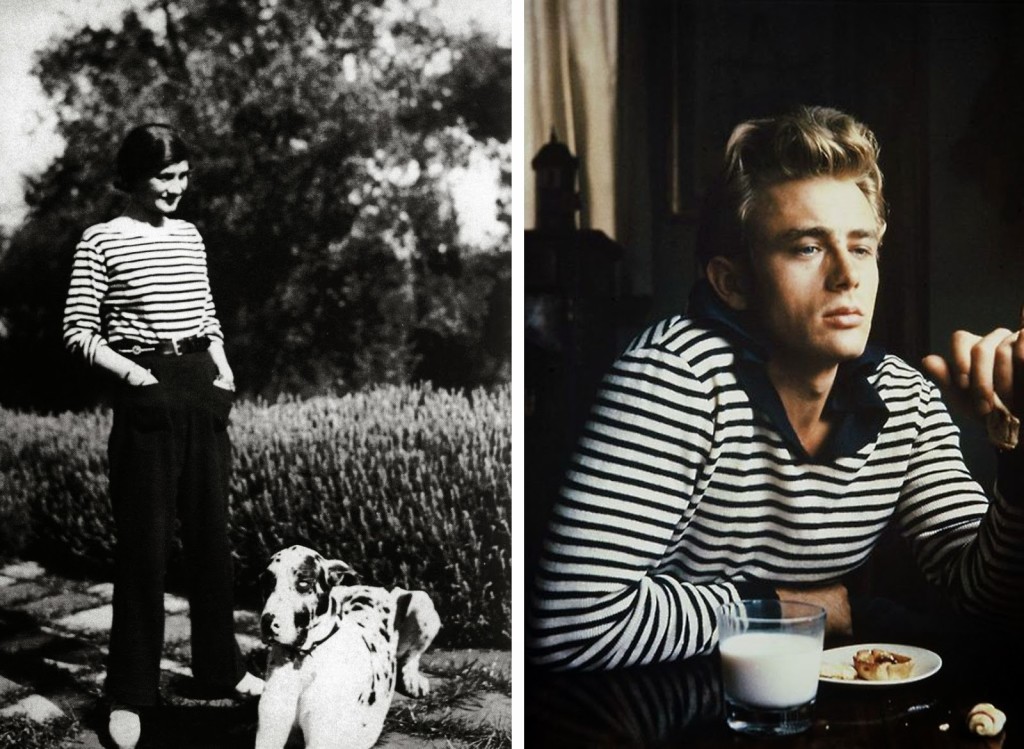When the temperature drops in New England, some people rummage through their closets and cedar chests for all the knitted woolens stowed away since last winter. Assuming the moths haven’t made a meal of them, sweaters form a fine base layer for keeping out the cold.
Two hundred years ago, when the winds turned chilly sailors donned garments similar to our modern sweaters. They called their knitted garments Guernsey frocks. Named for the small island in the English Channel, where home knitters have been crafting exquisite woolens for ages, these hard-wearing garments were just the thing for keeping the chest and arms warm at sea.
While their existence can be traced to the 1790s, they seem to have become commonplace in the Royal Navy around 1804. In November of that year, none other than Admiral Horatio Nelson wrote a letter to the Commissioners of the Navy asking them to modify a new garment:
Victory, at Sea 20th November, 1804
Gentlemen,
To further answer to your Letter of the 25th June last, relative to my opinion of the Guernsey jackets of a new manufacture, therein-mentioned, (which were issued to the seaman on the 14th October,) and what further supply of them may be necessary for the Squadron under my command, I must beg leave to observe the quality of the said Guernsey jackets is most excellent, but that they are considerably too narrow and short to be tucked into the Men’s trowsers. It is, therefore, my opinion that they ought to be at least three inches wider, and six longer. Indeed, if they were ten inches or a foot, it would be so much better, as they shrink very considerably in washing; and when the Seaman are on the yards, reefing or furling sails, the jacket rubs out of their trowsers and exposes them to great danger of taking cold in their loins; so that, with this alteration, which is particularly necessary, they certainly would be the best and most valuable slops that ever were introduced into the Service, and be the mean of saving many a good Seaman’s life. With respect to the quantity required, it would not be too many to send out one for every Seaman in the Fleet. Perhaps the Guernsey jacket, in its present state might answer the largest of the boys.I am , Gentlemen &c.
Nelson and Bronte1
The garments were so new, in fact, that Nelson didn’t even know what to call them. His reference to Guernsey “jackets” rather than “frocks” harkens back to an older 18th century usage of the term jacket. Rather than referring to an outer garment as we do today, jacket was often used to describe a vest or waistcoat with sleeves. In Nelson’s mind, these new woolen items were meant to be worn beneath the sailor’s outer jacket and over a shirt — just like a waistcoat.
Guernsey frocks begin to appear in artwork about the same time. Philip DeLoutherbourg painted his remarkable portrait of Robert Williams, boatswain’s mate on the HMS Venerable in about 1805. You can see the frock’s wide neck and his check shirt underneath.
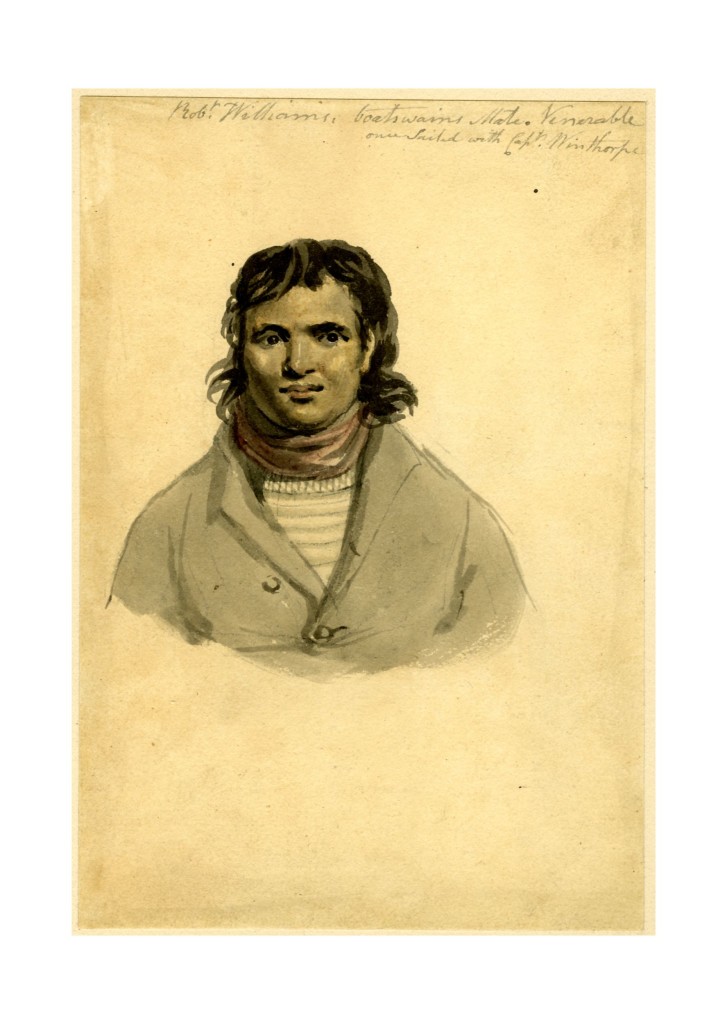
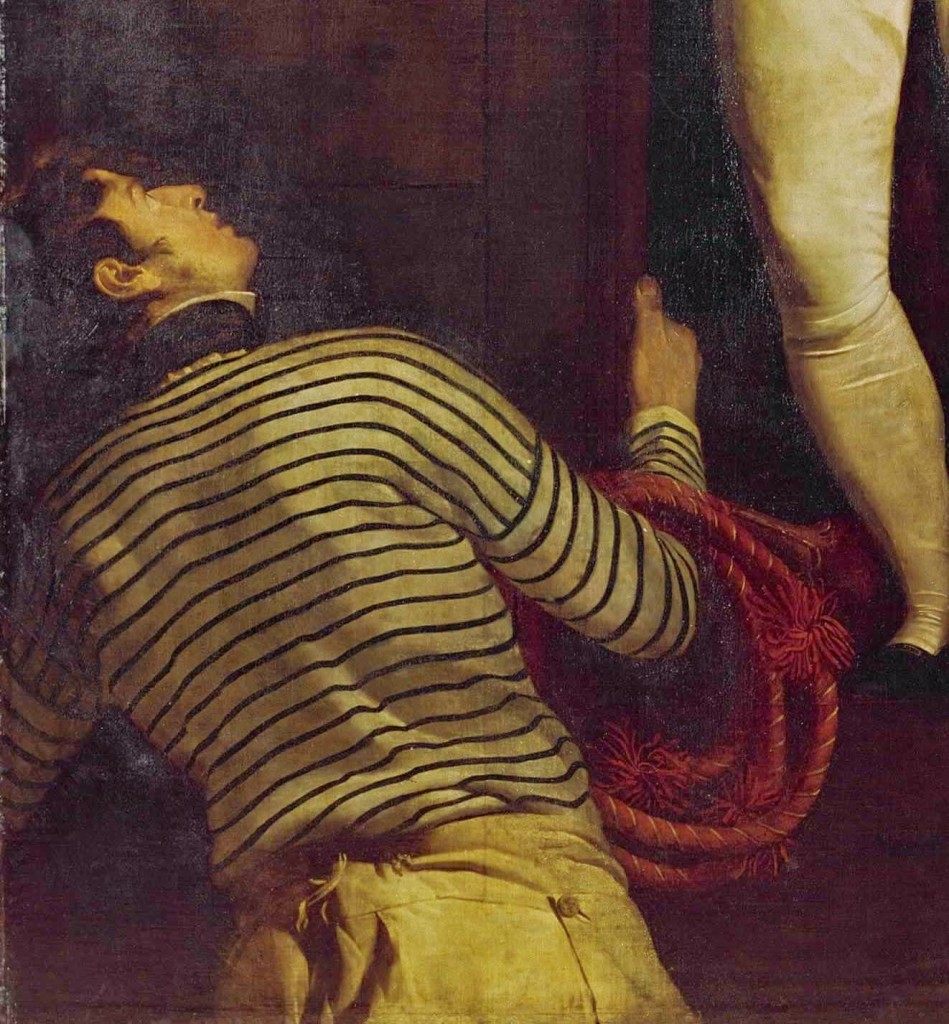
Some knitting historians have speculated that these frocks were knit by hand. They certainly could have been, but the late 18th century witnessed the proliferation of knitting frames in England. These machines could produce fine knitted goods like stockings, pantaloons, and frocks quickly and uniformly — just the sort of thing a Royal Navy clothing contractor would like. Captain Basil Hall of the Royal Navy enumerated the numbers and sorts of garments a sailor should have in the 1820s, and included in his list “two Guernsey frocks, made of a sort of worsted stocking-work, without any opening in front.”2
In America, Guernseys were often marketed by hosiery merchants with business connections in London.3 As with many other aspects of American culture, the frocks were imported wholesale from England. The U.S. Navy adopted them early on. In 1799, Boston shopkeeper John Hoffman supplied USS Congress with 250 “gurnsy Frocks” and promised USS Essex another 150.4 In 1813, merchants William and Joseph Duvall supplied 200 Guernsey frocks at $2.00 each.5
Perhaps the best depiction of one of these frocks in an American context is found in the monumental portrait of Oliver Hazard Perry by John Wesley Jarvis. Now hanging in New York City Hall, the painting depicts a flag-draped Perry leaving his ravaged flagship Lawrence during the Battle of Lake Erie. To the left stands an American seaman, one of his crew, wearing a pair of blue trousers, a glazed hat, and a striped Guernsey frock.
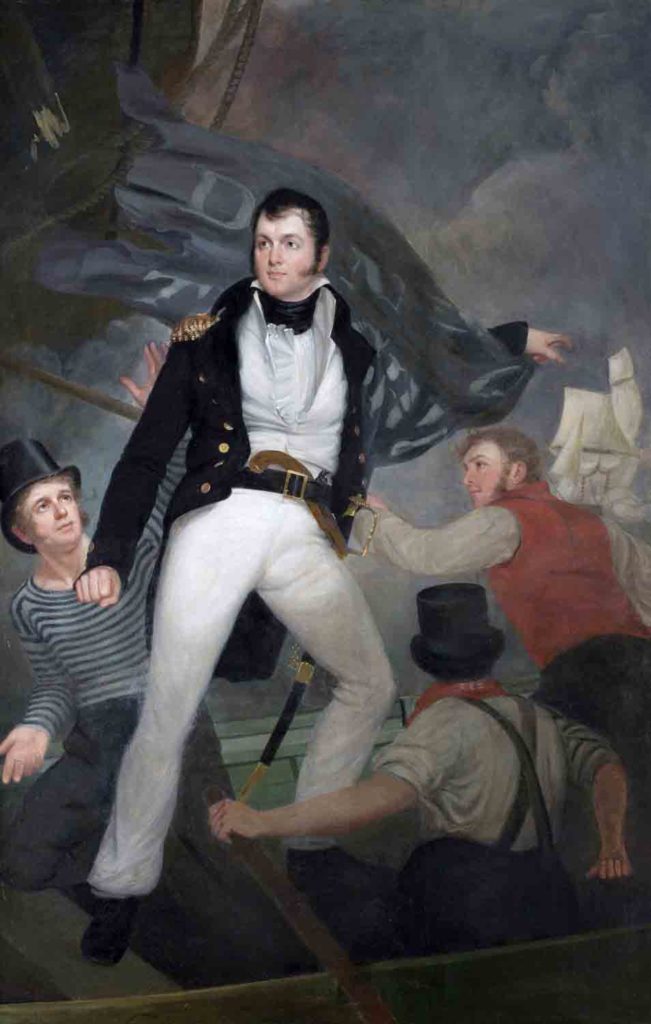
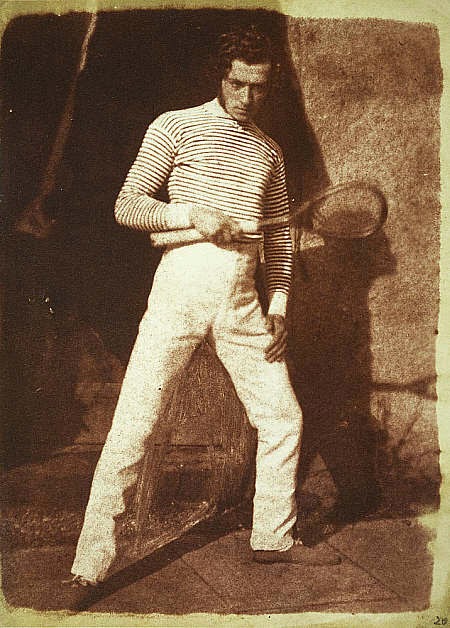
1 Nicolas Harris Nicolas, The Dispatches and Letters of Vice Admiral Lord Viscount Nelson, vol. 6 (London: Henry Colburn, 1846), 275-276.
2 Basil Hall, Fragments of Voyages and Travels, Second series, vol. 2 (Edinburgh, Robert Cadell, 1832), 93.
3 For example, see William Gibson’s hosiery store advertisement in the Mercantile Advertiser (NY), 8 Oct 1806.
4 Philip Chadwick Foster Smith, The Frigate Essex Papers: Building the Salem Frigate 1798-1799 (Salem: Peabody Museum, 1974), 174-175.
5 Voucher to William and Joseph Duvall, January 1813, in Fourth Auditor Settled Accounts, Alphabetical Series, RG 217, Box 2880, NARA.
The Author(s)
Matthew Brenckle
Research Historian, USS Constitution Museum
Matthew Brenckle was the Research Historian at the USS Constitution Museum from 2006 to 2016.
